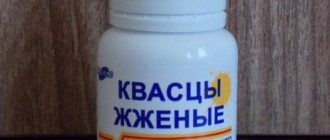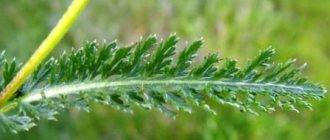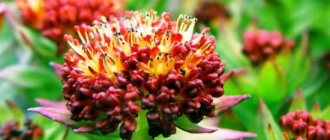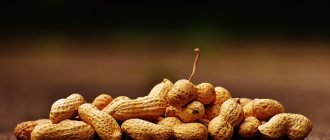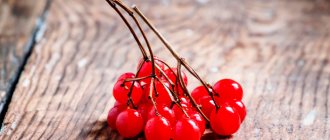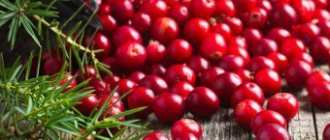The first mentions of the medicinal properties of honey were found in ancient Egyptian papyri about 5 thousand years ago, and the myths of Ancient Greece explained the immortality of the gods by the fact that they ate ambrosia, one of the components of which was honey.
Man, of course, has not yet been able to achieve immortality, but honey has many beneficial properties, and most of them have been scientifically proven. We have collected for you all the reliable facts about “sweet amber” and other beekeeping products.
Chemical composition of honey
Strictly speaking, honey consists almost entirely of fast carbohydrates - 38% fructose, 31% glucose, 1% sucrose and 9% other organic sugars (maltose, melicitose, etc.). Before people learned to make sugar from beets and sugar cane, honey was perhaps the only natural sweetener. However, in addition to sugars, honey also contains other substances: folic acid (vitamin B9), carotene (provitamin vitamin A), vitamins B1, B2, B6, E, K, ascorbic acid, amino acids (alanine, arginine, aspartic and glutamic acids , leucine, lysine, phenylalanine, tyrosine, threonine, in some varieties also methionine, tryptophan and proline) and the enzymes catalase, amylase, diastase, phosphatase.
Organic and inorganic acids are found in small quantities in all types of honey: malic, citric, lactic, oxalic, tartaric, linoleic.
Scientists explain the fact that honey may not spoil for years, and sometimes even decades, by two factors. Firstly, despite the fact that fresh honey is characterized by a liquid form, it has very little moisture and bacteria cannot multiply in it. Secondly, its pH value ranges from 3 to 4.5, that is, honey is an acidic environment that kills pathogens. Only linden honey has a pH close to neutral (4.5–7).
Carbohydrates
The bulk of honey consists of carbohydrates. For humans, they are the main energy material that provides energy to all of its systems. About 60% of calories burned are replaced by carbohydrates. They also regulate biochemical processes inside a person. With their deficiency, performance decreases.
Carbohydrates are sugars. Scientists have counted more than 25 species of them. The most important are monosaccharides, accounting for 61-79% of the mass of the medicinal product, disaccharides (up to 5% in honey from nectar and up to 10% from honeydew) and dextrins (no more than 2%).
Honey for weight loss
Very often, adherents of a healthy lifestyle suggest switching to honey instead of sugar, citing the fact that it is more suitable for dietary nutrition. Unfortunately, this is just a myth: the calorie content of different types of honey is up to 310 kcal (the calorie content of regular refined sugar is 387 kcal, brown cane sugar is 390 kcal).
However, due to the fact that honey stimulates metabolic processes, it is still healthier than sugar. The best time for it is the first half of the day. If you eat the required amount (for those who are losing weight, no more than 50 grams per day) during breakfast, then by the evening the resulting energy will be “burned” by mental activity and physical activity.
The glycemic index of honey depends on the variety, location, time of collection and other factors. The lowest index is for acacia (32) and eucalyptus (35–53), the highest is for sunflower (up to 85). The GI of regular refined sugar is 70, so diabetics and people monitoring their blood sugar levels should focus on acacia honey.
How to check naturalness
Honey is such a popular product that sometimes there is a risk of buying diluted or even fake.
Therefore, try to purchase beekeeping products from those sellers you trust, or from stores that closely monitor the quality of the products. If you have any doubts, here are some tips for checking the quality.
- Scoop the honey with a spoon and let it drip down: real honey drips slowly and leaves a small mound at the bottom. The fake one will flow quickly and immediately spread across the surface
- Try rubbing the product with your fingers. The real one will simply be absorbed into the skin, while the fake one will form lumps.
- Try diluting honey in water, and then add a little iodine to the container. The blue color of the liquid will be a signal that flour or starch has been added to the product.
Honey in medicine
Application in official medicine
Since ancient times, honey has been used for better healing of wounds and burns. In modern official medicine, its functions have not changed.
In 2015, a clinical study was conducted in which doctors treated burns, wounds and chronic ulcers with honey and traditional antiseptics. As a result, it was found that compresses with honey accelerate healing even better than antiseptic rinses with gauze bandages.
In official medicine and veterinary medicine, honey from the New Zealand manuka bush (slender broom seed) is used to heal wounds. Its content of methylglyoxal aldehyde, which has powerful antimicrobial properties, is approximately 100 times higher than the concentration in ordinary types of honey. Methylglyoxal is formed directly in the honeycomb after dehydration of the substance dihydroxyacetone contained in the nectar of manuka bush flowers. Studies have shown the effectiveness of using manuka honey against Staphylococcus aureus and E. coli.
Use in folk medicine
In folk medicine, it is customary to use honey both as a monomedicine and in combination with other products.
The most popular folk remedy for ARVI and colds is black radish juice with honey. Radish contains vitamins C, E, K, B and PP, minerals and essential oils. When combined with honey, it helps fight bacterial infections and improves the overall health of the body. Ginger tea with the addition of lemon and honey has the same effect.
Herbalists often offer fireweed tea (fireweed) with honey as a mild sedative. Unlike ordinary teas, which contain caffeine, which stimulates the nervous system, fireweed is suitable for pregnant and lactating women, as well as for children. We wrote in more detail about the properties of this plant in our article.
Our expert, tea tester Natalya Prokhorenko, offers her recipe for fireweed tea with honey and pine cones.
Honey in medicine is used not only as an ingredient in drinks. Healers suggest making honey compresses for patients with radiculitis and rheumatism.
Attention! Before using folk remedies, be sure to consult your doctor.
-5%
249 rub. 262 rub.
Honey urbech Bees & Seeds “Shoko Honey”, 400 g
0 reviews
-15%
595 rub. 700 rub.
Gift set Healing gift of Altai “Pine honey”, collection of syrups on pine buds, 4 x 100 ml
0 reviews
-9%
122 rub. 134 rub.
Herbal tea Give tea “Honey apple with ginger”, loose leaf, 50 g
0 reviews
-15%
266 rub. 312 rub.
Honey Bashkir Apiaries “Linden”, Pot 180 g
0 reviews
153 rub.
Corn flakes Nestle Gold “Honey Nut Flakes”, with honey and peanuts, 300 g
0 reviews
370 rub.
Peroni Honey Soufflé “Blueberry Punch”, 250 g
0 reviews
-13%
417 rub. 479 rub.
Rooibos tea Give tea “Orange with honey”, loose leaf with additives, 100 g
0 reviews
Even more honey on TEA.RU
Fructose
Fructose is the sweetest natural product. If regular sugar is taken as 1.0, then for fructose this figure is 1.78, and for glucose it is only 0.81. It is not subject to crystallization, and therefore varieties of honey with a high level of this fruit sugar remain in a liquid state for a long time.
It is not immediately absorbed, but is synthesized into glycogen and stored as a reserve in the cellular cytoplasm of the myocardium and muscle tissue. Glycogen also accumulates in the liver (up to 300 g). With intense energy consumption, it is released in the form of glucose.
Doctors use it to cleanse the liver during alcohol intoxication. In diabetes, other types of sugars are replaced with it - it does not require the presence of insulin for absorption.
It enters honey in the same way as glucose - through nectar and with the help of invertase during the breakdown of sucrose. The content in the sweet product is up to 42%.
The use of honey in cosmetology
It is unknown who and when first used honey as a cosmetic product, but the fact that it can be used to maintain or restore beauty was known back in Ancient Egypt. There is a legend that Queen Cleopatra took baths with milk, honey and olive oil. Later, masks made of honey and milk were applied to the face and body of ancient Greek women, and the most famous physician of antiquity, Hippocrates, wrote in his works about the benefits of honey for human health.
Why is honey needed?
To fight inflammation.
Honey as a means for external use is good precisely because of its antibacterial properties. Honey face masks can reduce irritation and pimples, as well as even out old scars and the overall tone of the face, cleanse the skin of dead cells and speed up blood circulation.
For cleansing.
Honey can be an ingredient in cleansing masks for the face and body. Candied honey is often used as a scrub without adding additional components; in some cases it is mixed with coarse table or sea salt, granulated sugar and vegetable oil. Such cosmetics gently massage the skin without leaving damage to the epidermis, remove impurities and effectively fight inflammation.
The non-rough structure of honey allows it to be used to cleanse not only the skin of the face, but also the lips.
To fight wrinkles
Honey is a common component of anti-aging cosmetics due to its high content of antioxidants, which enhance cell regeneration and increase skin elasticity.
Vitamins
In the body, vitamins (they got their name from the Latin vita - life) act as catalysts and regulators of biological processes. In the process of life, the body requires very little of them: from 1.5 mg (vitamin B1) to 6.0 mcg (vitamin B12) per day. Since cells do not synthesize them (or rather, they synthesize them, but very little), vitamins must enter the body during meals with food.
There are just over 30 species known. The sweet product contains only 8 vitamins, which are guaranteed to be present in all types of honey:
- Thiamine (B1, contained 0.01 mg per 100 g of honey) regulates the speed of all important metabolic processes. Water soluble. It is destroyed when body temperature rises, and is also quickly excreted, which requires constant replenishment;
- B2 (0.03 mg), helps the body absorb iron. Quickly displayed;
- B3 or PP (0.20 mg) is involved in redox processes: carbohydrate metabolism, synthesis of fatty acids and cholesterol, protein metabolism;
- B5 (0.13 mg) helps cells produce energy;
- B6 (0.10 mg) is the most important vitamin from group B. Its main function is to organize the process of amino acid metabolism during protein synthesis;
- B9 (15.0 mcg) is involved in the production of neurotransmitters and the supply of carbon during the synthesis of hemoglobin;
- Ascorbic acid (vitamin C, 2.9 mg) is a powerful antioxidant. Catalyst for the synthesis of a number of hormones and collagen protein, removes toxins, regulates metabolism;
- Biotin (vitamin H, 0.04 mcg). It is this substance that, when combined with insulin, starts the process of glucose processing.
Use of honey in cooking
Honey is the oldest food sweetener. Despite the fact that in the 19th century it was almost completely replaced by sugar, which was cheaper to produce and neutral in taste, many dishes are still prepared only using honey.
There is a popular myth that when heated, honey loses most of its beneficial qualities and acquires almost carcinogenic properties. This theory comes from Ayurvedic medicine and has not been proven by scientific research. When fructose is heated, the substance hydroxymethylfurfural is actually released, but OMF does not negatively affect the human body. Moreover, this substance is contained in any products where fructose has been exposed to high temperatures (jams, jams, coffee, etc.).
Conclusion: it is possible and necessary to use honey in cooking, especially since its calorie content and glycemic index are still slightly lower than that of ordinary beet or cane sugar.
Medicinal properties
So what diseases and misfortunes can this viscous nectar cure? It is famous for:
- has antibacterial and antimicrobial effects;
- helps reduce pain and increase immunity;
- significantly facilitates the patient’s well-being during colds, bronchitis or sore throat;
- fights vitamin deficiency, compensating for the lack of nutrients;
- has a positive effect on the liver, removing toxins and waste from the body;
- gives strength after physical activity;
- helps treat stomach ulcers;
- helps reduce the impact of stress on the body and fights insomnia;
- has a beneficial effect on joints.
Honey benefits us not only when consumed internally. It is regularly used for various cosmetic procedures - it has a good effect on the condition of the skin and hair.
Contraindications
Consumption of honey and other bee products can be harmful in several cases:
- Individual intolerance.
Honey is a strong allergen. If the slightest signs of allergy appear, you should immediately stop using it for food or cosmetic purposes.
- Diabetes.
Doctors do not recommend eating honey for patients with type I diabetes. The maximum you can afford is a spoonful of the treat once a week. For patients with type II diabetes, the dose may be increased to 1 spoon per day. However, in 2021, Egyptian scientists conducted a study, according to the results of which honey could potentially be used as an antidiabetic agent.
- Infancy.
- Excess weight.
How to take on an empty stomach
You can eat honey not only during the main meal or as a dessert. Its solution can also be drunk on an empty stomach, and here's why:
- it is able to “wake up” the stomach in the morning and start metabolism, give tone and vigor;
- normalizes the general acidity of the gastrointestinal tract, which means it is useful for ulcers and gastritis.
In order to get a healthy morning drink, just dilute a teaspoon of the product in a glass of warm water.
The main thing is not to skip breakfast. If you drink such a drink and do not eat within an hour, you risk feeling very weak due to a sharp decrease in blood glucose levels.
Attention: the above method is not suitable for those who suffer from diseases of the pancreas, since honey in the morning and on an empty stomach can cause irritation.
Benefits of other bee products
Propolis
The benefits of “bee glue,” which the insects themselves use to seal up holes in the walls of hives, have been known for a long time. Like honey, it is a product of processing pollen by bees and contains flavonoids, esters, fatty acids, amino acids (including essential ones) and minerals: magnesium, potassium, sodium, iron, zinc, manganese, copper, cobalt, phosphorus , sulfur, antimony, aluminum, chromium, selenium, silicon, strontium, titanium, vanadium, tin and fluorine.
It has antimicrobial, antioxidant, anti-inflammatory, immunomodulatory effects on the body. It is actively used as an antiseptic and analgesic in dentistry.
Royal jelly
The substance that bees feed to the queens and larvae of their hive is produced in the maxillary gland of each insect. The chemical composition of milk includes water, proteins (mostly albumins), carbohydrates, vitamins, fatty acids, minerals and trace elements.
Japanese scientists studied how royal jelly interacts with anticancer drugs in molecular targeted therapy, and recorded a significant improvement in the condition of patients.
Milk is used in cosmetology to stimulate collagen production, fight wrinkles, inflammation, acne and scars. It is included in anti-aging creams and masks for the skin of the face and neck.
Water
Many buyers of the sweet product are sure that the water in it appears only as a result of the machinations of unscrupulous sellers who dilute it with sugar syrup. And they all know a dozen ways to detect this liquid in honey.
In fact, the natural, flavorful treat contains between 15 and 21% water. Its quantity is determined by many factors:
- the period during which bees collect nectar;
- type of honey plant (honey variety) - each plant has its own, unique ratio of water and other chemical compounds in the composition of the nectar;
- climatic zone where beekeepers work;
- product maturity;
- storage conditions (container and terms).
The level of water content in honey is regulated by law in many countries. Often this indicator is the main one when ranking it by variety.
In Russia, GOST provides for a maximum water content of 20%. The exception is cotton varieties - for them this figure is 19%. In a number of countries, the maximum humidity is 21%.
The limit of 20-21% moisture in honey is explained by the fact that at a humidity of 21% and above, a spontaneous fermentation process begins. Wild yeast races begin to decompose carbohydrates, resulting in an unpleasant odor and sour taste. The product loses its presentation.
Improving hair structure and scalp
As part of the mask, the positive properties are visible in that it helps improve the scalp, strengthen the hair and hair follicles. It will help get rid of dandruff and stop the process of unwanted particles appearing. Masks can be made both in the salon and at home. However, you should remember that the mask cannot be applied to newly dyed hair. Honey will wash out the paint pigments. We offer a universal recipe:
- olive oil – 2 tbsp. spoons;
- honey - 2 tbsp. spoons;
- egg – 1 pc.
Method for preparing the mask: mix all components in a plastic bowl with a hair coloring brush or a plastic fork. It is better not to use metal components. Apply the resulting mixture to dry, clean hair from roots to ends. Leave the mask on for 30 minutes. You can wear a cap or wrap your hair in plastic. Afterwards, we rinse everything thoroughly, apply shampoo, and rinse off the residue.
This procedure should be repeated every week. Hair will become stronger, natural shine will appear, and excessive hair loss will stop.
Microflora
Being both a product of plant and animal origin, honey has a specific microflora. At the same time, it can be primary, entering the combs when honey is added, and secondary, introduced into the finished product during its processing or storage.
About 40 species of bacteria, spores and yeasts were found in the primary microflora. High sugar content inhibits their growth (with the exception of yeast). They begin to grow actively when the humidity of the sweet product increases above 21%. In general, the microflora of honey is absolutely safe for humans.
Beneficial properties and contraindications for women consuming honey during pregnancy and lactation
The benefits of honey for the body of women during pregnancy have been scientifically proven. Nectar has a positive effect on the development of the fetus, normalizes blood flow in the uterus, relaxes smooth muscles, preventing the risk of miscarriage and early birth.
During pregnancy, honey can be used by a woman to treat colds. During this period, the use of classical drugs is undesirable, and sometimes they are contraindicated. Nectar copes with colds and flu relatively quickly, and helps with bronchitis.
However, honey is also harmful for women, so it is worth consuming the delicacy in moderation. If allergies occur, nectar should be avoided.
During lactation, honey can be consumed in small quantities. Start with 0.5 teaspoon and look at the baby’s condition. If the child does not have a negative reaction, the dosage can be gradually increased.
Dyes
The coloring substances in honey have practically not been studied. It is known that tonins and anthocyanins color honey dark colors. Light shades are formed by chlorophyll, carotene and xanthophyll. Of all the dyes, only flavonoids have been studied quite well.
Flavonoids are yellow plant pigments. Living organisms are not capable of synthesizing them. At the same time, they are not able to function without them. Therefore, the presence of flavonoids in food is extremely necessary.
The role of phenolic compounds in the plant world has been little studied. They are supposed to protect plants from overheating and radiation. At the same time, their functions in the animal world have been studied quite widely. Scientists believe that the main task of flavonoids is to maintain the immune system in working order.
Studying more deeply the effects of this group of biologically active substances on humans, a number of research centers have reported the ability of phenolic compounds to actively suppress the growth of cancer cells.
Phytoncides
Phytoncides are antibiotics created by nature to protect the plant world from bacteria, microscopic fungi and protozoa. Even their name is translated from Greek and Latin as the plant’s ability to kill (Greek “phyton” - plant and Lat. “cedere” - I kill).
In plants they are present both in nectar and pollen. Taking bribes, the bee transfers phytoncides into honey. In it and propolis, chemists discovered avenacin, benzoic acid, tannins and other phytoncides. Being in them in a microscopic volume, they, together with other biologically active compounds, transform these products into a powerful antibacterial agent that can resist anthrax, typhoid, brucellosis and other infections.
Aromatics
The smell of honey is influenced by more than 200 aromatic substances:
- Sahara;
- alcohols;
- carbonyl compounds;
- acids;
- esters.
They are not in nectar. But as the bee moves through the flower, from its cells, through the glands, aromatic substances enter the nectaries. Naturally, the bee transfers them along with the nectar into honey. Appearing in various combinations, they give the finished product a specific aroma. The strength of the smell is regulated by substances that have pronounced volatility - esters.
Each type of honey has its own specific aroma and strength of smell. For example, fireweed honey has virtually no odor, but has a dizzying aroma, while tobacco honey, on the contrary, has a strong and unpleasant odor. Aromatic substances are unstable and volatile. Over time, especially when storing honey in poorly closed containers, they disappear completely.
A little history
Honey is a sweet, viscous product produced by bees. It is nectar partially digested in the crop of a honey bee or the sugary secretions of some plants.
Source Wikipedia
It has been known for a long time, at least since the 8th millennium BC. e. In the Indo-European tradition, honey is often associated with the divine drink of immortality.
Honey is considered a symbol of immortality, health, fertility, prosperity, happiness, beauty, sweet life. It is also called the food of the gods and the elixir of life.
By origin, honey can be either flower or honeydew. Flower honey is produced by bees through the process of collecting and processing the nectar secreted by plants. Bees produce honeydew by collecting honeydew - the sweet secretions of some insects - and honeydew (the exudation of sugary juice on spruce needles and on the leaves of some plants) from the leaves and stems of plants.
Honey varies in color, smell and taste. If honey is collected from a certain type of plant, it is called monofloral and given the name of the plant from which it was collected: buckwheat, linden, rapeseed, sweet clover, acacia, chestnut, clover, sunflower. Honey collected from different plants is called polyfloral (mixed) or simply floral.
Honey is often named after the geographic area associated with its origin. In Russia, Altai, Bashkir, Far Eastern linden, and Siberian fireweed honey is known.
The main importers of honey are the USA, Japan and Germany. They annually import up to 250 thousand tons of honey.
Genitourinary system
The most common disease of the urinary system in women is cystitis. A beekeeping product will help get rid of the inflammatory process in the epithelium and destroy microbes due to its properties:
- antibacterial, antimicrobial;
- immunomodulatory;
- anti-inflammatory;
- regenerating, restoring.
An equally serious problem that brings a woman a huge sense of discomfort, shame, leading to social isolation is urinary incontinence. It can occur in either an elderly woman or a very young girl for a variety of reasons.
Honey will help:
- improve bladder functioning;
- strengthen the pelvic floor muscles;
- relax the effect on the central nervous system;
- improve the functioning of all urinary organs.
Taken simultaneously with medications for diseases of the urinary system, honey will enhance their positive effect.



